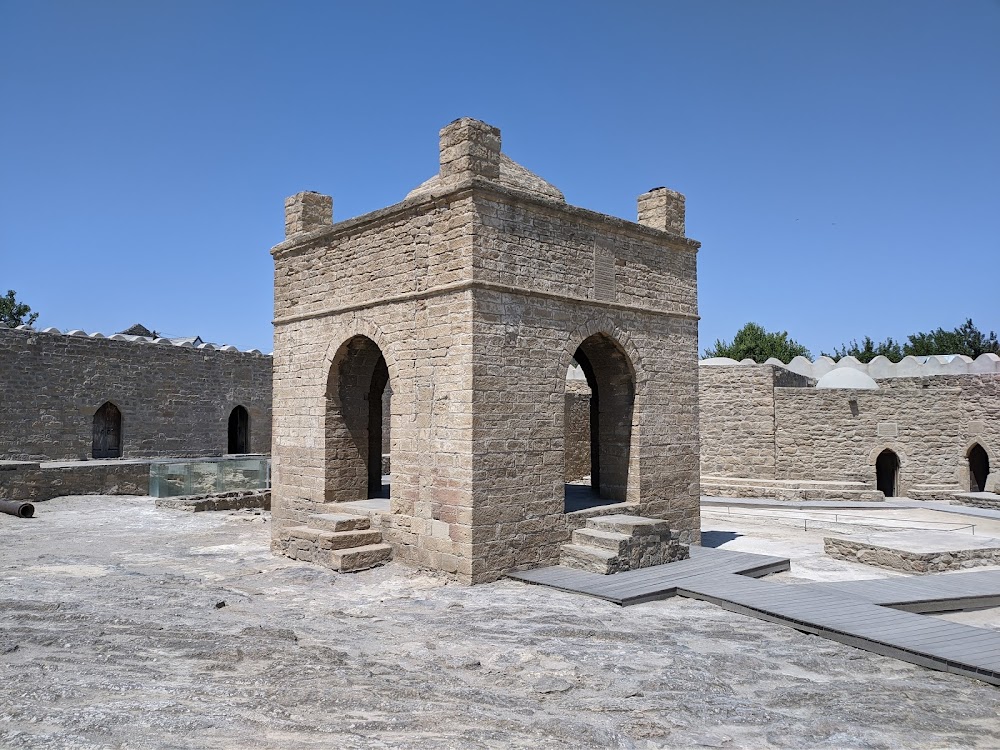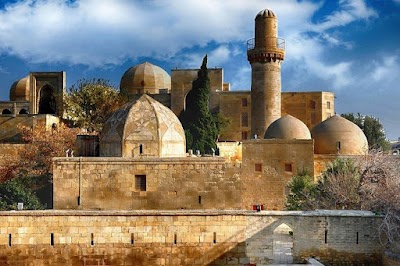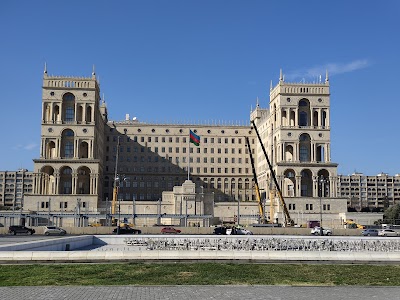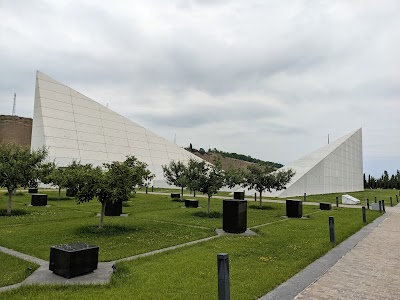Palace of the Shirvanshahs (Şirvanşahlar Sarayı)
Overview
The Palace of the Shirvanshahs is a stunning architectural gem nestled in the vibrant city of Baku, Azerbaijan. This remarkable complex serves as a testament to the medieval dynasty of the Shirvanshahs, who ruled the region for centuries. Situated in the heart of the old city, known as Icherisheher, the palace showcases the grandeur and sophistication of medieval Azerbaijani architecture, captivating visitors with its historical significance and intricate design.
Constructed in the 15th century under the direction of Shah Ibrahim I, the palace was built to serve as the royal residence when Baku became the capital of the Shirvan state. This strategic move was primarily due to Baku's advantageous position on the Caspian Sea, which provided enhanced defense against invaders and facilitated trade routes, contributing to the region's prosperity.
The palace complex comprises several key structures, including the residential building, the Divankhana (an elegant octagonal pavilion), the burial vault, the Palace Mosque, the Mausoleum of Seyid Yahya Bakuvi (a notable philosopher), and the Key Gubad Mosque. Each building is a masterpiece of design, showcasing the refined tastes and cultural values of the Shirvanshah rulers, with intricate details that invite admiration.
The residential section of the palace was originally built from local limestone, giving it a unique golden hue that glistens in the sunlight. Skilled artisans employed traditional techniques to carve intricate patterns and Islamic calligraphy into the stone facades. This section features multiple rooms, halls, and galleries arranged around a central courtyard, which hosted guests and royal ceremonies alike.
One of the highlights of the palace complex is the Divankhana, a stunning example of Azerbaijani architecture. This ornate, dome-covered octagonal structure is nestled within a small courtyard and is believed to have been used for state ceremonies and important meetings. Its design symbolizes the authority and prestige of the Shirvanshah dynasty, while the delicate stone carvings and arabesques accentuate the extraordinary craftsmanship of the period.
Another significant feature is the Mausoleum of Seyid Yahya Bakuvi, which houses the tomb of the esteemed philosopher. This mausoleum is characterized by its simple yet elegant design, harmonizing flawlessly with the surrounding structures. The dome, adorned with intricate geometric patterns, exemplifies the beauty of medieval Islamic architecture.
The Palace Mosque and its adjoining minaret are also integral to the complex. Built in the mid-15th century, the mosque may be modest in size but is rich in historical and architectural significance. Its minaret, visible from various points in the old city, stands as a beacon of faith and a landmark of cultural heritage. Inside, the mosque features religious inscriptions and intricate stonework that enhance its spiritual ambiance.
Adding to the complexity of the palace is the Key Gubad Mosque, believed to have been constructed before the other structures. Despite suffering damage over the centuries, it remains a vital part of the complex, showcasing the architectural evolution in the region.
Through the years, the Palace of the Shirvanshahs has undergone numerous restorations and renovations, particularly during the Soviet era. Preservation efforts have focused on maintaining its historical authenticity while transforming it into a museum and cultural site for contemporary visitors. Today, it stands proudly as a symbol of Azerbaijan's rich history and cultural legacy, attracting travelers from across the globe.
The architectural splendor of the Palace of the Shirvanshahs not only highlights the ingenuity and skill of medieval Azerbaijani builders but also serves as a vivid reminder of the historical and cultural evolution of the Shirvan region. It is a living legacy of the Shirvanshah dynasty, intricately woven into the fabric of Baku’s Old City, waiting to be explored and appreciated by all who visit.









